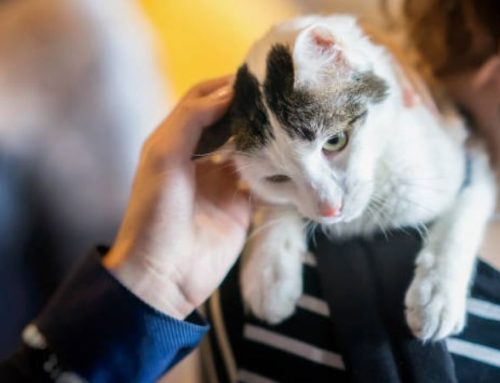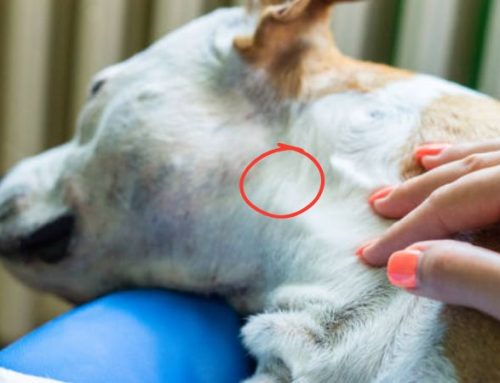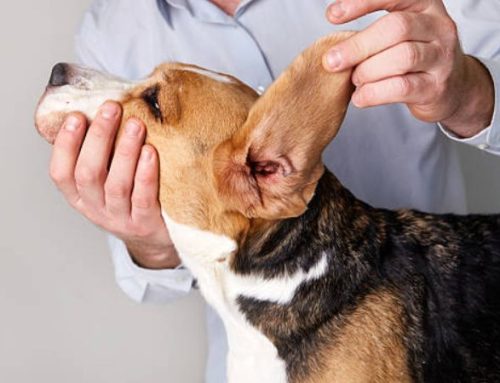Cats have a talent for turning even the most unsettling household intruders into toys and few pests trigger their inner hunter like a darting cockroach. Those quick, jerky movements flip a switch in almost any feline, whether they’re a pampered indoor cat or a street-smart stray. But when curiosity turns into a crunchy snack, many owners are left wondering: Is it actually safe for cats to eat cockroaches?
The short answer is more complicated than a simple yes or no. While roaches themselves aren’t toxic, they can carry bacteria, parasites, and traces of pesticides that may lead to stomach upset, vomiting, or more serious reactions. Understanding the risks and what to do if your cat just swallowed one is the key to keeping your little predator both satisfied and safe.
This guide breaks down why cats chase roaches, the potential dangers, what symptoms to watch for, and how to prevent unwanted “bug tasting” sessions around your home.
Can Cats Eat Cockroaches?
Cats are natural-born hunters, and cockroaches trigger their instincts almost instantly. The quick, unpredictable movements of roaches mimic the behavior of small prey, making them irresistible targets for chasing, pouncing, and sometimes eating. Even well-fed indoor cats may “hunt for sport,” driven by instinct rather than hunger.
From a biological perspective, cockroaches are technically edible for cats. Their bodies contain protein and fats that a feral cat might consume in the wild. However, “edible” does not mean “safe,” and veterinarians do not recommend allowing your cat to snack on insects found inside the home.
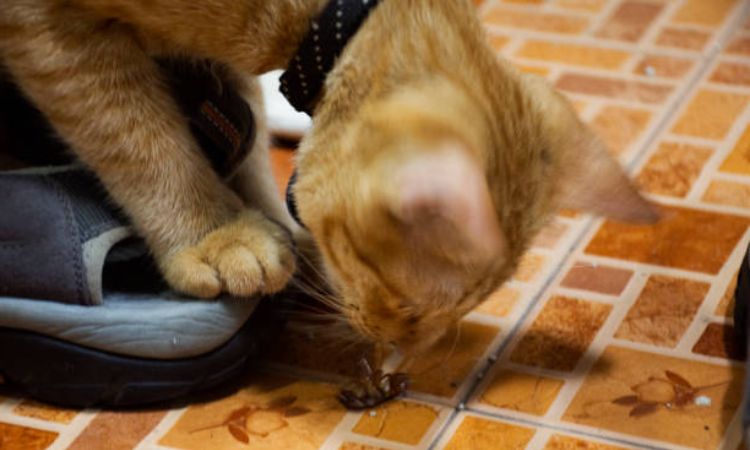
Cockroaches can become dangerous for three main reasons:
- Pesticides: Roaches killed by sprays, baits, gels, or foggers may contain insecticide residue. Even tiny amounts can irritate your cat’s mouth and stomach or, in severe cases, cause neurological symptoms.
- Bacteria and viruses: Cockroaches crawl through garbage, drains, and contaminated areas, picking up pathogens like Salmonella, E. coli, and various parasites that can make your cat sick.
- Parasites: Roaches can carry worm eggs or protozoa, which may infect cats when ingested.
Because of these risks, letting your cat eat cockroaches is never considered safe, even if most cats recover without major issues.
Cats can eat cockroaches, but it’s not safe. Roaches may carry pesticides, bacteria, and parasites that can harm your cat.
Related Reads:
My Cat Ate a Cockroach and Threw Up — Should I Worry?
It’s not unusual for a cat to vomit after eating a cockroach. Roaches may be fascinating prey, but they’re far from gentle on a cat’s digestive system. Most cases are mild and resolve on their own, but some situations do need veterinary attention—especially if pesticides or illness-causing organisms are involved.
Why Cats Often Vomit After Eating Cockroaches
Several factors can trigger stomach upset after a cat swallows a roach:
1. The Hard Exoskeleton Can Irritate or Scratch the Stomach
Cockroaches have a tough, crunchy outer shell called an exoskeleton.
For some cats, this material is difficult to digest and can:
- Aggravate the lining of the stomach
- Cause vomiting shortly after eating
- Lead to gagging or retching if larger pieces remain undigested
This is the most common, non-dangerous reason cats throw up after consuming insects.
2. Possible Exposure to Pesticides or Cleaning Chemicals
The roach itself is not toxic but whatever killed or contaminated it might be.
If the roach was exposed to:
- Sprays
- Baits
- Residual insecticide on floors or walls
- Household cleaners
your cat may ingest small amounts of toxins. Symptoms can range from mild gastrointestinal upset to more serious reactions depending on the substance and dose.
Warning signs of pesticide exposure include:
- Repeated vomiting
- Excessive drooling or foaming
- Tremors or twitching
- Diarrhea
- Weakness or restlessness
- Rapid breathing
Any of these signs warrant immediate veterinary help.
3. Bacteria and Parasites Carried by Cockroaches
Roaches are known for carrying a variety of pathogens, including:
- Salmonella
- E. coli
- Roundworm and hookworm eggs
- Viral contaminants
If a cat ingests an infected cockroach, symptoms may show up hours to days later often as vomiting, diarrhea, or lethargy.
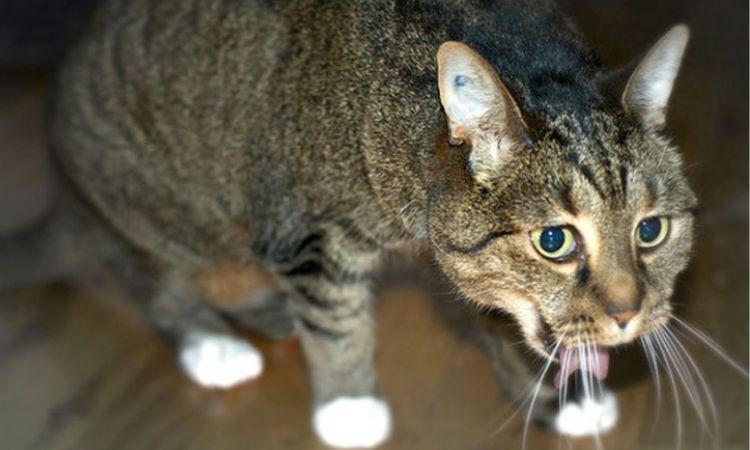
When You Should Call the Vet
Seek veterinary attention if you notice:
- Vomiting more than 2–3 times in a short period
- Vomiting that continues past 24 hours
- Blood in the vomit or stool
- Heavy drooling or foaming
- Neurological signs (shaking, wobbling, seizures)
- Refusal to eat or drink
- Signs of dehydration (dry gums, lethargy, sunken eyes)
If you suspect any pesticide exposure, do not wait contact a vet or Pet Poison Helpline immediately.
Home Care Tips (When It’s Safe to Monitor)
If your cat vomited once or twice but seems otherwise normal:
- Offer fresh water and monitor hydration.
- Withhold food for 6–8 hours, then reintroduce a bland meal (like plain boiled chicken) if tolerated.
- Keep your cat indoors and prevent access to insects.
- Watch for ongoing stomach upset, drooling, or changes in behavior.
If symptoms improve within several hours and do not return, the vomiting was likely due to stomach irritation from the exoskeleton.
When to Act Immediately
Go to a veterinary clinic right away if:
- Vomiting becomes frequent or forceful
- Your cat ingested a roach known to have been killed by chemicals
- Neurological signs appear
- Your cat stops drinking or becomes listless
Prompt treatment can prevent dehydration, toxin absorption, and serious complications.
Can Kittens Eat Cockroaches? (Important for younger cats)
Kittens are naturally curious and highly energetic hunters, often exploring their environment with wide-eyed enthusiasm. Their instinct to chase moving objects including insects like cockroaches is strong, but unlike adult cats, kittens are at a higher risk when consuming or playing with bugs.
Why Kittens Are More Vulnerable
Kittens’ bodies are still developing, which makes them more sensitive to potential hazards:
- Immature immune system: Kittens are less equipped to fight off bacteria, parasites, or viruses that cockroaches may carry. Even a single contaminated insect can introduce pathogens like Salmonella or hookworms, leading to gastrointestinal upset.
- Developing digestive tract: The kitten’s stomach and intestines are more delicate, making them prone to vomiting, diarrhea, or other digestive disturbances if they ingest hard-bodied insects.
- Smaller body size: Due to their lighter weight, kittens are more susceptible to toxins from pesticides or venom residues that might remain on or inside a cockroach.
Specific Dangers of Cockroach Ingestion for Kittens
- Choking Hazard: Cockroaches have hard exoskeletons, which can be difficult for kittens to chew and swallow. Small kittens may attempt to swallow large pieces whole, increasing the risk of choking or even intestinal blockage.
- Toxin Sensitivity: Even tiny amounts of pesticides or insecticide residues on cockroaches can have a stronger effect on kittens than adult cats. Symptoms of poisoning may include:
- Drooling or foaming at the mouth
- Vomiting or diarrhea
- Lethargy or weakness
- Tremors or difficulty breathing in severe cases
- Bacterial and Parasitic Infection: Cockroaches can carry bacteria, viruses, and parasites harmful to kittens. An already vulnerable digestive system may struggle to process these pathogens, potentially leading to prolonged illness.
Safe Ways to Redirect Hunting Instincts
Completely preventing a kitten from chasing or “hunting” is unrealistic they are biologically programmed for it. The key is providing safe alternatives:
- Interactive toys: Wand toys, balls, or moving mechanical mice can satisfy the hunting instinct without exposure to harmful insects.
- Treat-based enrichment: Puzzle feeders or treat-dispensing toys engage your kitten’s problem-solving skills and mimic the “reward” of catching prey.
- Supervised exploration: If allowing outdoor exploration or access to insect-rich areas, supervise closely and remove any potentially dangerous insects immediately.
By redirecting their predatory instincts safely, kittens can enjoy stimulation and exercise without the health risks associated with eating cockroaches or other harmful insects.
“Kittens should not eat cockroaches smaller size, weaker immunity, and digestive sensitivity make even harmless bugs risky. Redirect hunting instincts with toys or treats.”
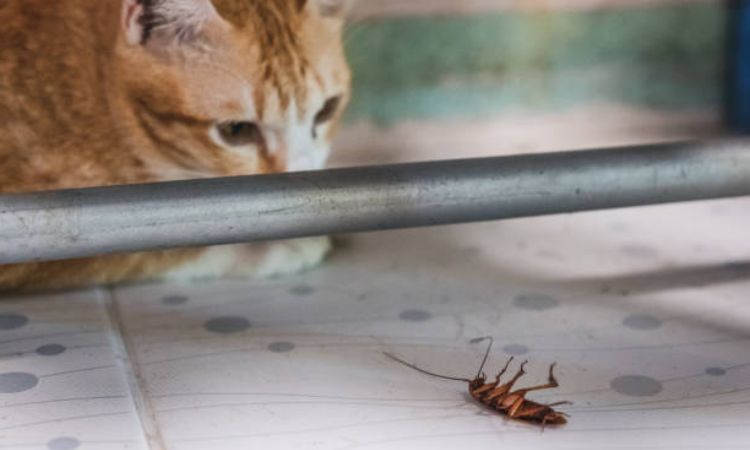
How to Stop Cats from Eating Cockroaches
Cats are instinctive hunters, and chasing or even eating insects like cockroaches is a natural behavior. While this is normal, it can pose health risks, especially if the insects have been exposed to pesticides or carry bacteria. Preventing your cat from eating cockroaches requires a combination of environmental control, behavioral enrichment, and gentle training strategies.
1. Environmental Control
Reducing your cat’s access to cockroaches is the most effective first step. Focus on eliminating the conditions that attract these pests:
- Remove food debris: Cockroaches are drawn to crumbs, spilled pet food, and open garbage. Clean kitchen counters, vacuum floors, and ensure your cat’s feeding area is tidy.
- Fix leaks and moisture issues: Cockroaches thrive in damp areas. Repair leaky faucets, seal gaps under sinks, and avoid standing water in trays or bowls.
- Use pet-safe traps: Sticky traps or bait stations labeled as safe for pets can help reduce cockroach populations. Avoid chemical sprays that contain pesticides, which can be harmful if ingested by cats.
- Secure trash bins and stored food: Keep garbage covered and store dry cat food or snacks in sealed containers to limit cockroach access.
2. Behavioral Enrichment
Cats chase insects because it stimulates their hunting instincts. Providing safe alternatives can satisfy this need without exposure to harmful bugs:
- Interactive toys: Wand toys, laser pointers, or moving mechanical toys simulate prey movement, engaging your cat’s natural chase behavior.
- Feeding puzzles: Treat-dispensing toys or puzzle feeders mimic the reward of catching prey, keeping your cat mentally stimulated while discouraging hunting of cockroaches.
- Scheduled play sessions: Regular, structured playtime reduces boredom, making your cat less likely to seek out insects for entertainment.
3. Gentle Training Cues and Deterrents
Punishing cats for hunting or eating insects is ineffective and can damage the human-animal bond. Instead, use positive redirection and safe deterrents:
- Noise or water deterrents: A gentle clap, a soft spray of water, or an air canister can interrupt your cat’s chase without causing fear. Always pair with immediate redirection to a toy.
- Clicker training: Reward your cat for responding to cues like “leave it” or “no” with treats or affection. Over time, this teaches them to ignore cockroaches on command.
- Deterrent placement: Keep cats out of rooms where cockroaches are likely to appear by using barriers or gates, ensuring they have safe play areas elsewhere.
By combining environmental hygiene, safe alternatives for hunting, and positive training, you can significantly reduce the risk of your cat ingesting cockroaches. This not only protects their health from toxins, bacteria, or parasites but also provides enrichment that keeps them happy and engaged.
As a responsible cat owner, the key takeaway is clear: while a single roach nibble is rarely fatal, the hidden dangers of pesticides and internal parasites make this a habit your feline hunter needs to break. Trust your instincts if your cat exhibits persistent vomiting, lethargy, or any signs of poisoning after a successful hunt, immediate consultation with your veterinarian is the safest course of action.



